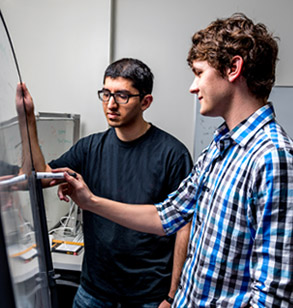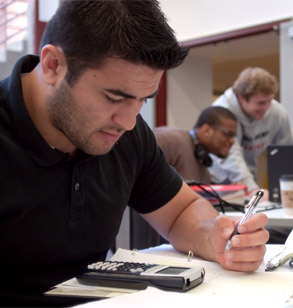The AP credits we accept are described in the table below. A more complete statement on AP and transfer credit is given on the Admissions Advanced College Credit webpage. Many entering students have advanced placement or transfer credit, especially in mathematics. Therefore, specially recommended course sequences and special sections are provided for advanced placement students in calculus and differential equations courses.Though this webpage covers most of the common advanced placement situations, special situations may arise. If you have any questions about mathematics advanced placement or transfer credit please contact the Department Head.
|
AP Program |
Credit |
|
Score of 4 or 5 on the AB test for AP Calculus |
MA111-Calculus I (5 credits) |
|
Score of 4 or 5 on the BC test for AP Calculus |
MA111-Calculus I (5 credits) |
|
Score of 4 or 5 on the AP Statistics |
General MA100-level credit (4CR). Students are not exempt from MA 223 if their program requires it. |
|
Score of 5 or better in the International Baccalaureate Exam |
MA111-Calculus I (5 credits) |
|
Accelerated Math and Physics program |
MA113-Calculus III (5 credits) |
|
RHIT Calculus Credit Exam - Calculus I; prior appointment only, see Calculus Placement Exam page. |
MA111-Calculus I (5 credits) |
|
Transfer credits from accredited colleges. |
Credit as determined and approved by the Mathematics Department.
|
|
Rose-Hulman credit by exam |
As arranged and approved by the Mathematics department. Please read the appointment restrictions below. |
|
Notes:
|
|





